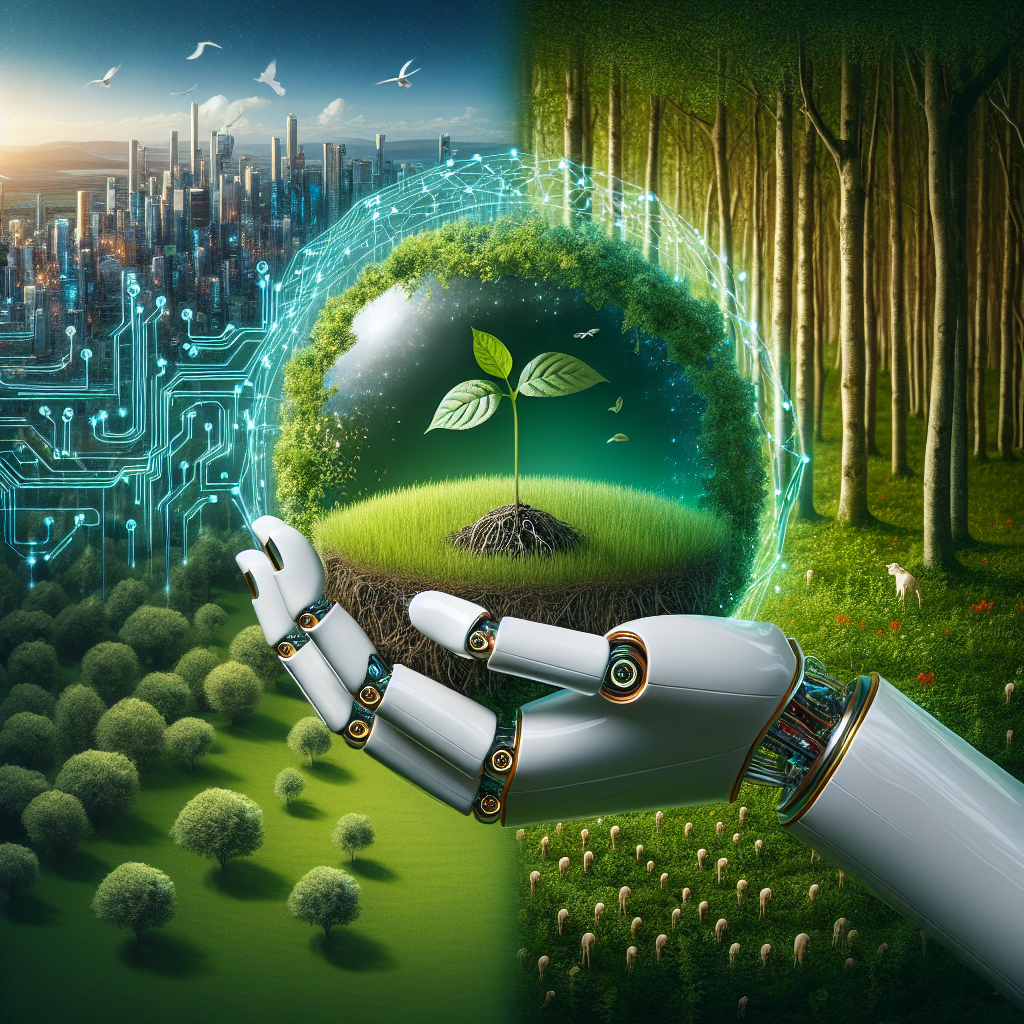The Risks of AI in Environmental Conservation: Impacts on Ecosystems
Artificial intelligence (AI) has revolutionized many aspects of our lives, from healthcare to transportation to entertainment. In recent years, AI has also been increasingly used in environmental conservation efforts to help monitor, analyze, and protect ecosystems. While AI has the potential to greatly improve conservation outcomes, there are also risks associated with its use that must be carefully considered.
One of the main risks of using AI in environmental conservation is the potential for unintended consequences on ecosystems. For example, AI-powered monitoring systems may be able to detect and respond to threats such as poaching or habitat destruction more quickly and effectively than traditional methods. However, these systems may also have unintended impacts on wildlife behavior, leading to disruptions in ecosystems that can have long-term consequences.
Another risk of AI in environmental conservation is the potential for bias in data collection and analysis. AI systems are only as good as the data they are trained on, and if that data is biased or incomplete, it can lead to skewed results that may not accurately reflect the true state of an ecosystem. For example, if AI systems are trained on data that only includes certain species or habitats, they may overlook important information about other species or ecosystems that are equally in need of protection.
Additionally, the use of AI in environmental conservation raises concerns about privacy and data security. AI systems often collect vast amounts of data, including sensitive information about wildlife populations, habitats, and human activities. If this data is not properly secured and protected, it could be vulnerable to hacking or misuse, potentially putting both wildlife and human communities at risk.
Furthermore, there is the risk of over-reliance on AI in conservation efforts, leading to a reduction in human oversight and involvement. While AI can certainly help to streamline and automate many aspects of conservation work, it is important to remember that human expertise and judgment are still essential in making decisions about how best to protect and preserve ecosystems. Relying too heavily on AI systems without input from conservation professionals could lead to missed opportunities for effective conservation action.
Despite these risks, AI also has the potential to greatly benefit environmental conservation efforts. AI-powered tools can help researchers and conservationists to more efficiently collect and analyze data, identify patterns and trends in ecosystems, and predict and prevent threats to biodiversity. By leveraging AI technology, conservationists can make more informed decisions about how best to protect and restore ecosystems, ultimately leading to better outcomes for wildlife and the environment.
FAQs
Q: How is AI currently being used in environmental conservation efforts?
A: AI is being used in a variety of ways in environmental conservation, including monitoring wildlife populations, tracking habitat changes, analyzing satellite imagery, and predicting the impacts of climate change on ecosystems.
Q: What are some examples of AI tools being used in conservation?
A: Examples of AI tools being used in conservation include camera traps that use AI to identify and track individual animals, drones equipped with AI-powered sensors for monitoring ecosystems, and predictive models that analyze data to forecast species population trends.
Q: What are some of the potential benefits of using AI in conservation?
A: Some potential benefits of using AI in conservation include improved data collection and analysis, faster response times to threats, more accurate predictions of ecosystem changes, and increased efficiency in conservation efforts.
Q: How can we ensure that AI is used responsibly in environmental conservation?
A: To ensure that AI is used responsibly in environmental conservation, it is important to prioritize data privacy and security, address biases in data collection and analysis, involve human experts in decision-making processes, and regularly evaluate the impacts of AI tools on ecosystems.
Q: What are some ways that individuals can support AI in environmental conservation efforts?
A: Individuals can support AI in environmental conservation efforts by staying informed about the latest developments in AI technology, advocating for responsible use of AI in conservation, and supporting organizations and initiatives that are using AI to protect and preserve ecosystems.

